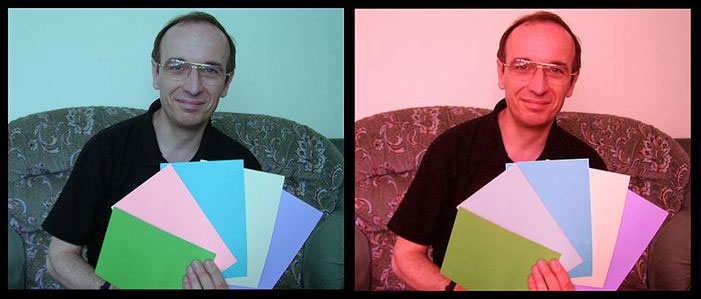Debriefing Part 3
Color constancy ensures that the perceived color of objects remains relatively constant under varying illumination conditions. A banana, for instance, looks yellow to us at midday, when the main illumination is white sunlight, and also at sunset, when the main illumination is red. Colour constancy helps us identify objects.
Here is an example of how the same scene can appear different in different lighting conditions:

For example, in this picture the second piece of paper from the left seems to be a stronger shade of pink in the left photo, when in reality it is exactly the same colour. The blue tint of the left photo and the reddish tint of the right photo provide context that changes the perception of the piece of paper in each case.
This may be very similar to what is occurring with the dress in this activity – some peoples' expectations that the photo of the dress was taken in blue light make the dress look less blue, other peoples' expectations that the photo of the dress was taken in brighter, red-tinged, sunlight make the dress seem more muted and white and gold instead.